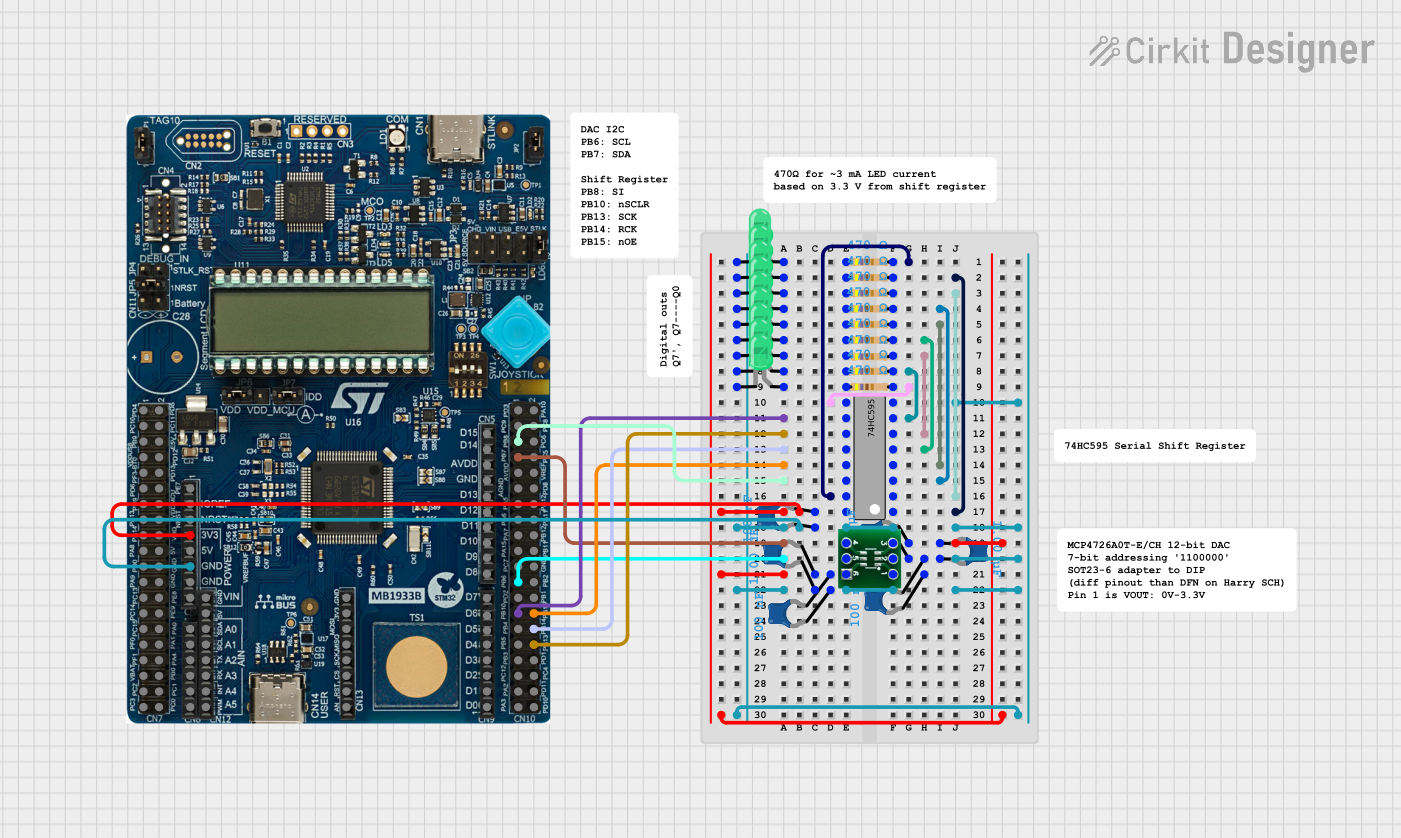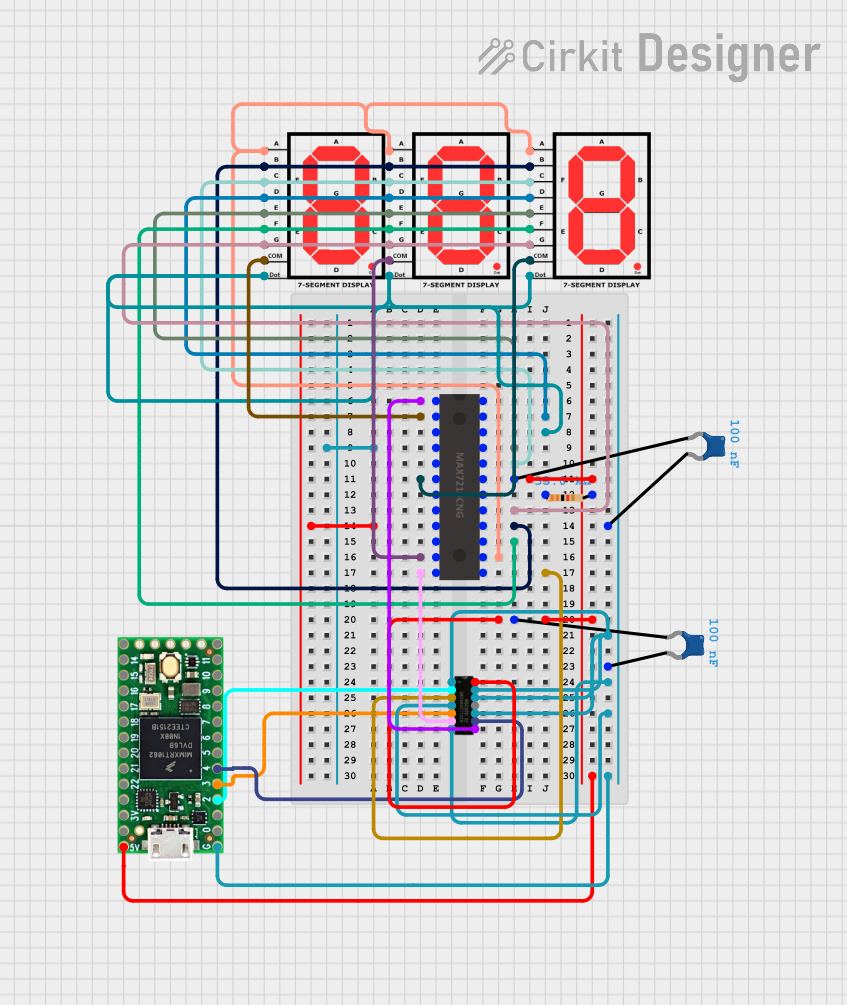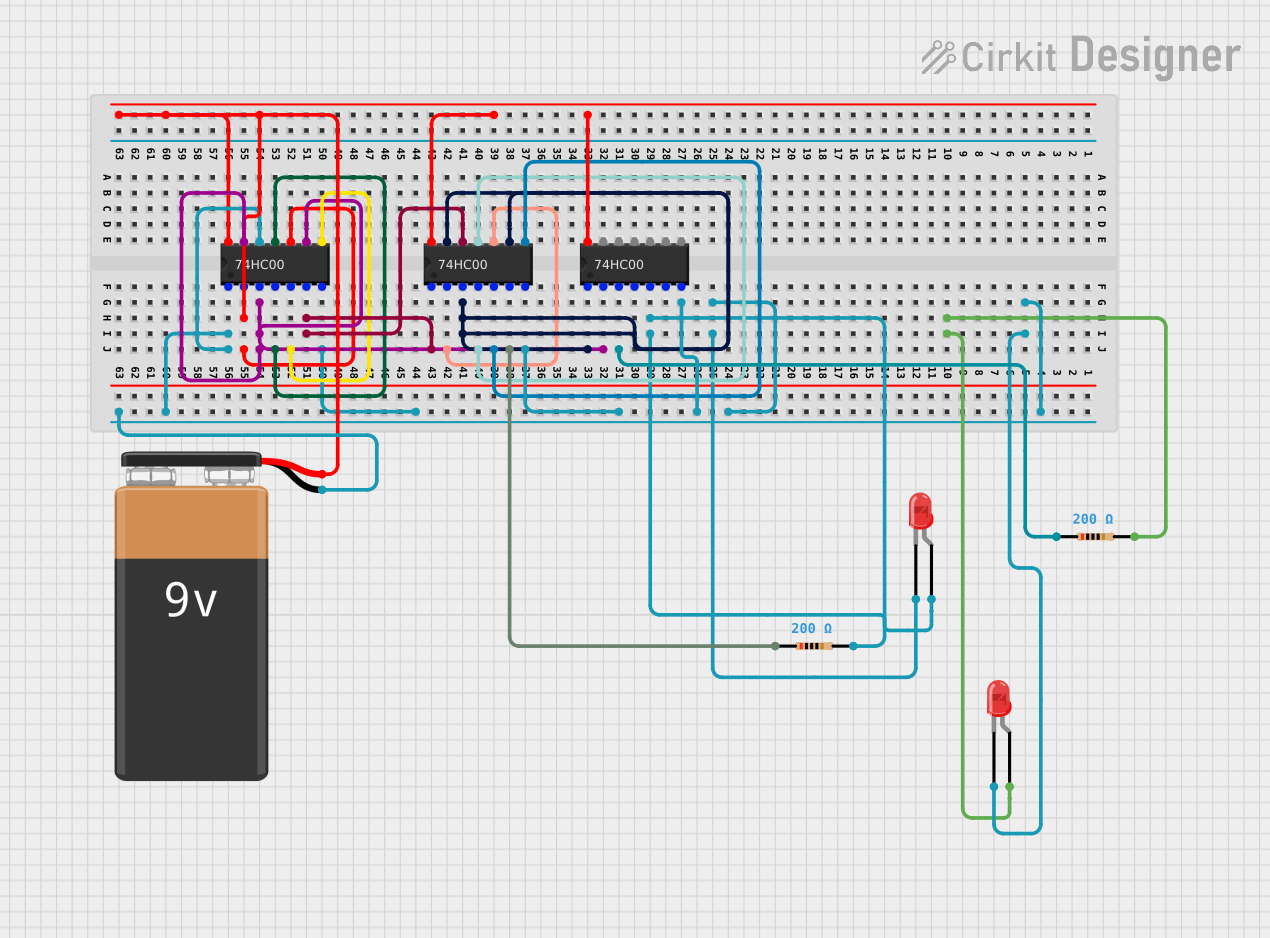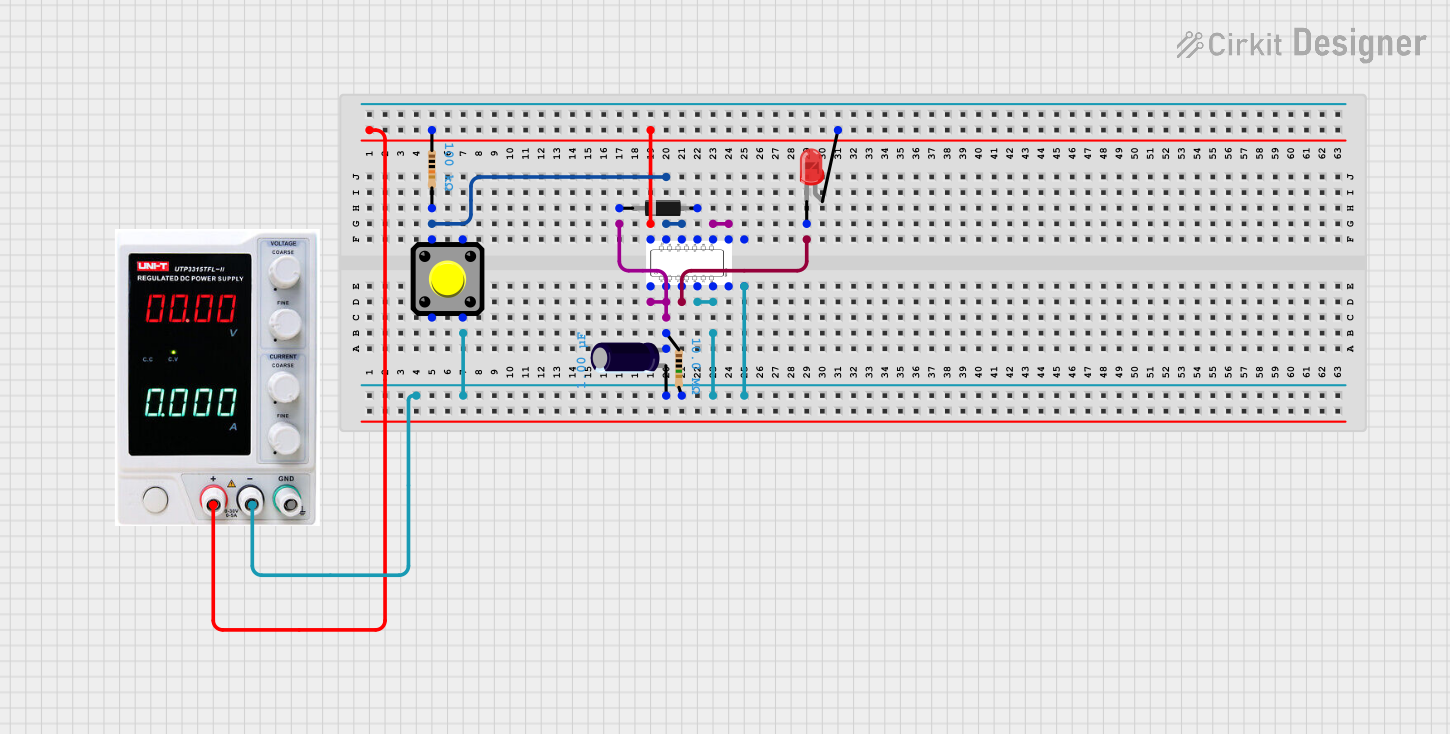
How to Use SN74HC86N: Examples, Pinouts, and Specs

 Design with SN74HC86N in Cirkit Designer
Design with SN74HC86N in Cirkit DesignerIntroduction
The SN74HC86N is a logic IC that contains four independent 2-input Exclusive OR (XOR) gates. This integrated circuit is designed by Texas Instruments (TI) and is commonly used in digital circuits for performing the XOR logical operation. The XOR gate is a digital logic gate that outputs true or high only when the inputs to the gate are different.
Explore Projects Built with SN74HC86N

 Open Project in Cirkit Designer
Open Project in Cirkit Designer
 Open Project in Cirkit Designer
Open Project in Cirkit Designer
 Open Project in Cirkit Designer
Open Project in Cirkit Designer
 Open Project in Cirkit Designer
Open Project in Cirkit DesignerExplore Projects Built with SN74HC86N

 Open Project in Cirkit Designer
Open Project in Cirkit Designer
 Open Project in Cirkit Designer
Open Project in Cirkit Designer
 Open Project in Cirkit Designer
Open Project in Cirkit Designer
 Open Project in Cirkit Designer
Open Project in Cirkit DesignerCommon Applications and Use Cases
- Digital signal comparison
- Parity generators and checkers
- Encryption systems
- Adders and subtractors in arithmetic logic units (ALUs)
- Pattern recognition systems
- Circuit error detection and correction schemes
Technical Specifications
Key Technical Details
- Supply Voltage (Vcc): 2 V to 6 V
- Input Voltage (Vin): 0 V to Vcc
- Output Voltage (Vout): 0 V to Vcc
- High-Level Output Current (IOH): -5.2 mA (max)
- Low-Level Output Current (IOL): 5.2 mA (max)
- Operating Temperature Range: -40°C to 85°C
- Propagation Delay Time: 8 ns (typ) at Vcc = 5 V, CL = 15 pF
- Package: 14-Pin PDIP
Pin Configuration and Descriptions
| Pin Number | Name | Description |
|---|---|---|
| 1 | 1A | Input A for Gate 1 |
| 2 | 1B | Input B for Gate 1 |
| 3 | 1Y | Output for Gate 1 |
| 4 | 2Y | Output for Gate 2 |
| 5 | 2A | Input A for Gate 2 |
| 6 | 2B | Input B for Gate 2 |
| 7 | GND | Ground (0 V) |
| 8 | 3B | Input B for Gate 3 |
| 9 | 3A | Input A for Gate 3 |
| 10 | 3Y | Output for Gate 3 |
| 11 | 4Y | Output for Gate 4 |
| 12 | 4A | Input A for Gate 4 |
| 13 | 4B | Input B for Gate 4 |
| 14 | Vcc | Positive Supply Voltage |
Usage Instructions
How to Use the SN74HC86N in a Circuit
- Power Supply Connection: Connect pin 14 (Vcc) to the positive supply voltage (2 V to 6 V) and pin 7 (GND) to the ground of the circuit.
- Input Connection: Apply the digital signals to the A and B inputs of the gates you intend to use.
- Output Connection: Connect the output pins (1Y, 2Y, 3Y, 4Y) to the next stage of your digital circuit or to an output device, such as an LED or a logic analyzer, to observe the XOR operation results.
Important Considerations and Best Practices
- Ensure that the supply voltage (Vcc) is within the specified range to prevent damage to the IC.
- Unused inputs should be tied to either Vcc or GND to avoid floating inputs which can lead to unpredictable behavior.
- Decoupling capacitors (typically 0.1 µF) should be placed close to the Vcc pin to filter out noise and provide a stable power supply.
- Avoid exceeding the maximum current ratings for the inputs and outputs to prevent damage to the IC.
Troubleshooting and FAQs
Common Issues Users Might Face
- Outputs not behaving as expected: Ensure that all inputs are properly connected and that there are no floating inputs.
- IC getting hot or damaged: Check if the supply voltage is within the specified range and that the current ratings are not exceeded.
Solutions and Tips for Troubleshooting
- Double-check wiring and connections for any possible shorts or open circuits.
- Use a multimeter to verify the supply voltage and input signals.
- Replace the IC if it is suspected to be faulty after verifying the rest of the circuit.
FAQs
Q: Can I use the SN74HC86N at a supply voltage lower than 2 V? A: No, the IC may not function properly below the minimum specified supply voltage.
Q: What happens if I leave an input pin unconnected? A: An unconnected or floating input can pick up noise and cause unpredictable output. Always tie unused inputs to a defined logic level.
Q: Can I connect the outputs of two gates together? A: No, you should not directly connect the outputs of two gates as it can lead to contention and damage the IC.
Example Code for Arduino UNO
The following example demonstrates how to use the SN74HC86N with an Arduino UNO to perform an XOR operation on two digital inputs and display the result on an LED.
// Define the input and output pins
const int inputPinA = 2; // Connect to 1A of SN74HC86N
const int inputPinB = 3; // Connect to 1B of SN74HC86N
const int outputPin = 13; // Connect to 1Y of SN74HC86N
void setup() {
// Set the input and output pin modes
pinMode(inputPinA, INPUT);
pinMode(inputPinB, INPUT);
pinMode(outputPin, OUTPUT);
}
void loop() {
// Read the state of the inputs
int stateA = digitalRead(inputPinA);
int stateB = digitalRead(inputPinB);
// Perform the XOR operation using the digital inputs
int xorResult = stateA ^ stateB;
// Write the result to the output pin
digitalWrite(outputPin, xorResult);
// Delay for a short period to debounce the inputs
delay(50);
}
Remember to connect the Arduino's GND to the SN74HC86N's GND pin, and the 5V pin to the Vcc pin of the SN74HC86N. The inputs (1A and 1B) should be connected to the Arduino's digital pins 2 and 3, respectively, and the output (1Y) to the digital pin 13 or any other digital pin you choose to use as an output.